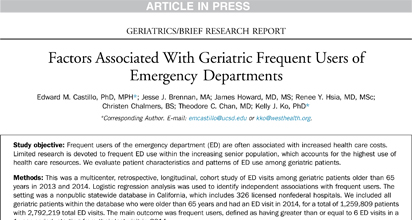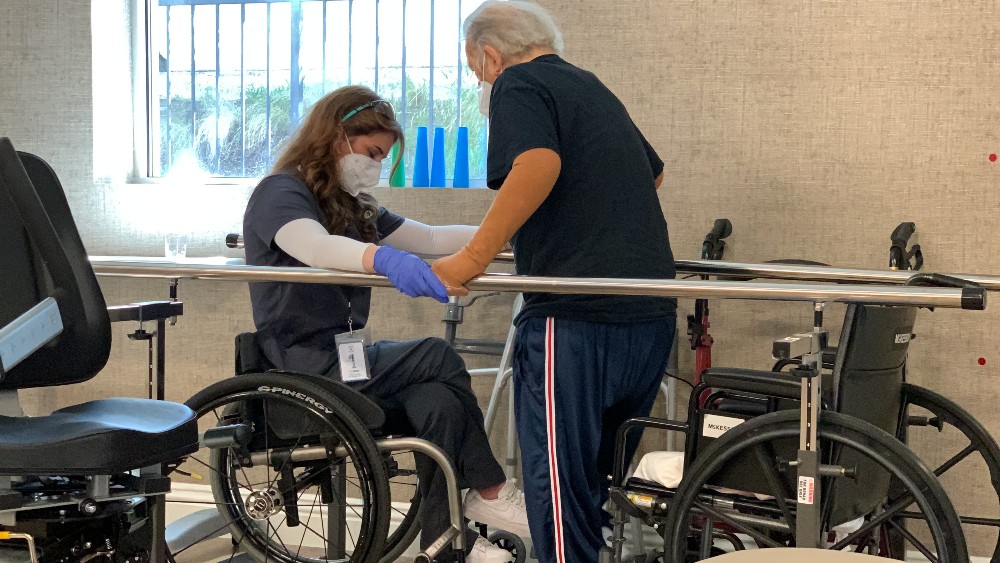
WASHINGTON, Jan. 28, 2019 /PRNewswire/ — Older adults go to the emergency department more often than other age groups, stay longer, and typically require more resources and medical interventions. The most common conditions among geriatric frequent users include diabetes, heart disease, kidney disease, congestive heart failure and blockage or damage to veins or arteries, according to new research in Annals of Emergency Medicine.
“Efforts to improve care for vulnerable older Americans should focus on enhancing delivery and decreasing utilization,” said Edward M. Castillo, PhD, MPH, associate adjunct professor with the University of California San Diego Department of Emergency Medicine and lead study author. “Older patients are more likely to have multiple chronic conditions which makes emergency care increasingly complex. A better understanding of older patients opens the door for interventions in and beyond the emergency department.”
Geriatric frequent users are most likely to visit an emergency department for pain or injury. The most common conditions among geriatric frequent users included diabetes (25.8%), chronic pulmonary disease (21.5%), kidney disease (19.1%), congestive heart failure (16%), and peripheral vascular disease (15.1%).
Geriatric frequent users are more likely to have been admitted/transferred (85.8%) or discontinue care (7.8%) than less frequent users (44.6% and 1.7%, respectively). Frequent users are more likely to have comorbid conditions and 20% of geriatric patients visit three or more hospitals in the year.
For the purposes of this study, a “frequent user” is a patient who visited an emergency department six times or more in 2014 in California. The analysis included more than 1.25 million patients visiting 326 licensed, non-federal hospitals. The study, “Factors Associated with Geriatric Frequent Users of Emergency Departments,” was funded by a grant from the West Health Institute.
Seniors represented 15% of the population but 21% of total health spending in 2012, and almost half of the top 1% of spending, according to the Agency for Healthcare Research and Quality (AHRQ). The Centers for Disease Control and Prevention (CDC) notes that more than 15% of emergency visits nationwide are made by seniors age 65 or older.


